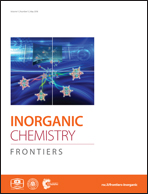The stability of hollow nanoparticles and the simulation temperature ramp
Abstract
Hollow nanoparticles (hNPs) are of interest because their large cavities and small thickness give rise to a large surface to volume ratio. However, in general they are not in equilibrium and far from their global energy minimum, which often makes them unstable against perturbations. In fact, a temperature increase can induce a structural collapse into a nanoparticle, and consequently a loss of their unique properties. This problem has been studied by means of molecular dynamics (MD) simulations, but without emphasis on the speed of the temperature increase. Here we explore how the temperature variation, and the rate at which it is varied in MD simulations, determines the final conformation of the hNPs. In particular, we show how different temperature ramps determine the final shape of Pt hNPs that initially have an external radius between 0.7 and 24 nm, and an internal radius between 0.19 and 2.4 nm. In addition, we also perform the simulations of other similar metals like Ag and Au. Our results indicate that the temperature ramp strongly modifies the final hNP shape, even at ambient temperature. In fact, a rapid temperature increase leads to the formation of stacking faults and twin boundaries which are not generated by a slower temperature increase. Quantitative criteria are established and they indicate that the stacking fault energy is the dominant parameter.



 Please wait while we load your content...
Please wait while we load your content...